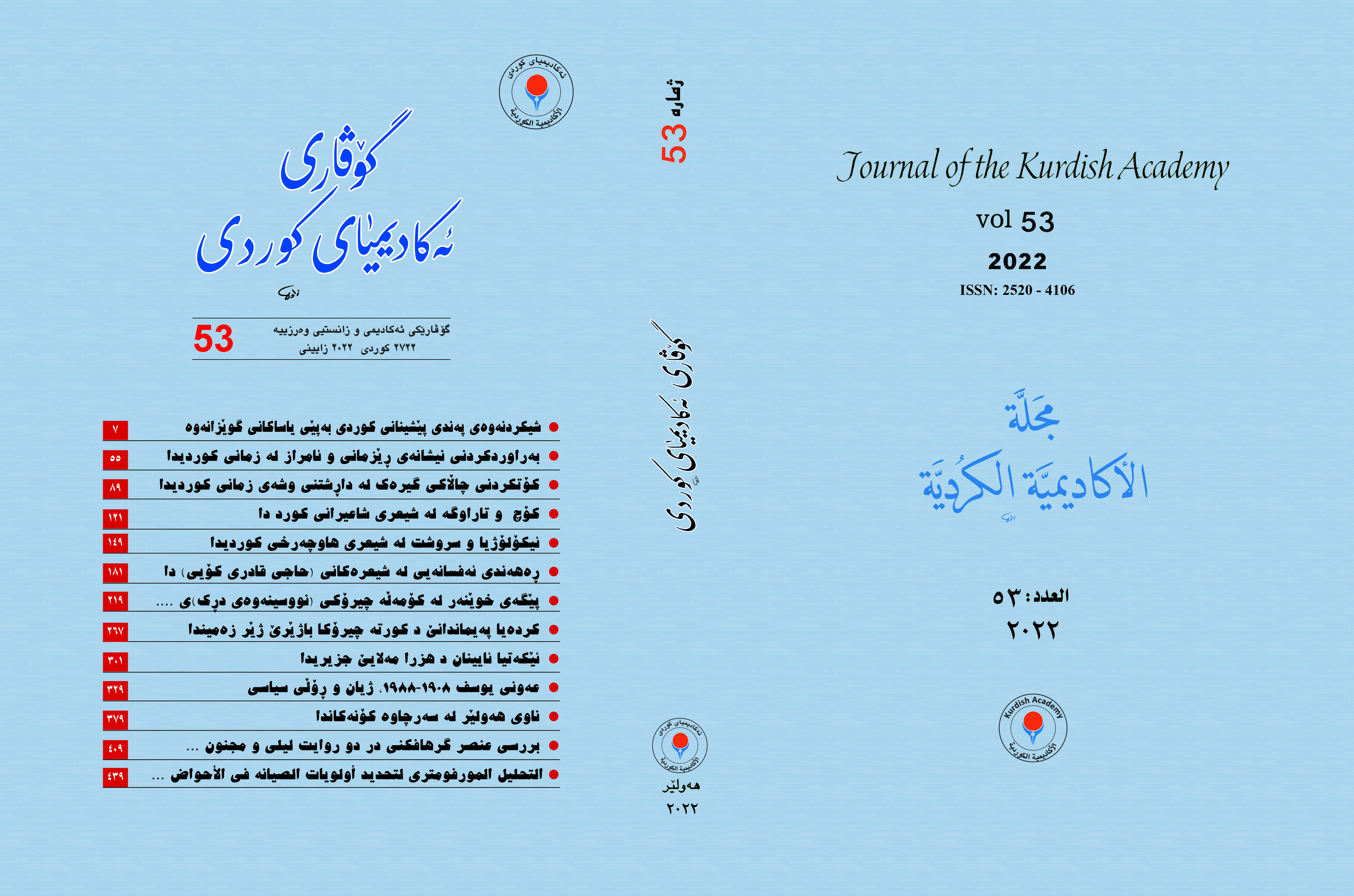پێگەى خوێنەر لە كۆمەڵە چيرۆكى (نووسينەوەى دڕك)ى (ئارام كاكەى فەلاح)دا
DOI:
https://doi.org/10.56422/ka..53.125Keywords:
Recipient, Aram Kakay Falah, Individual continent, Collective continent, Internal continent, Outer continentAbstract
From long ago, the process of the relation among the human beings have consisted of three major poles which are speaker, speech, and recipient. These three poles have not been considered equally in the process of criticism, but each has been tackled at a cetain period according to the development of criticism. At the beginning, the contextual methods in the historical, psychological, and social views have considered the writer only thinking that the writer is the main factor of the invention. Later, the Russian formalists and after them the structuralists, in a very severe reaction, separated the writer to a level of death from the text and focused on the text completely. Then appeared the theory of the recipient which viewed importantly in the role of recipient generally and the reader particularly thinking that the recipient is no longer a silent and a follower, but it is an active pole and will have its role in the re-structuring the text. This opened the ways of possibilities of multi readings and explanations and gave a view opened text. In other meaning the text to participate the readers in its text, should be an opened text carrying different explanations.
In this point of view we have decided to make recipient and reader the subject of this thesis in the short stories collection “re-writing thorn” of Aram Kakay Falah, because the topic of recipient and reader is a new topic in Kurdish criticism and Aram has taken care specifically in this collection of the reader and tried to participate the reader directly in his stories.
For this purpose, we have divided the thesis into two aspects. In the first one, we have stated the concept and terminology of recipient and in the second one we have pointed out and analyzed the types of reader according to the twins of singularity & plurality, external and internal, typical, and normal reader. Finally, we have recorded the most important conclusions of the thesis and list of the references.





